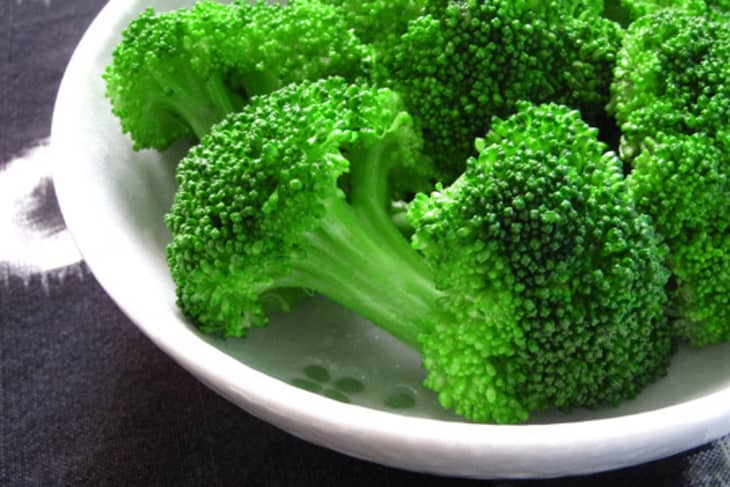Culinary Conundrums: What Does It Mean to Cook a Vegetable Until ‘Tender-Crisp’?
It must have been sometime in the 70’s when the phrase ‘tender-crisp’ began to appear in recipes and food articles. It started showing up around the time that people were rebelling against the limp, soggy, over-boiled vegetable offerings of the previous decades. Health food and hippie food was all the rage and vegetables were getting a major makeover. But what exactly does it mean to cook a vegetable tender-crisp? How can it be both at once?
It’s true that the opposing sensibilities of ‘tender’ and ‘crisp’ can create an almost Zen koan-like conundrum, but it’s an apt description. A vegetable that is cooked tender-crisp is heated and cooked all the way through, but still has some snap to it. ‘Tender’ refers to the fact that your teeth (or a knife) can easily sink all the way through and ‘crisp’ means there is still a slight crunch, that the vegetable still has its structure. A vegetable can be cooked until tender-crisp using any number of cooking methods, but steaming and blanching are the most popular.
Another way to recognize tender-crisp vegetables is that they retain most of their vibrant color. In fact, the color is often enhanced and brightened by the cooking. You know you’ve gone too far when the vegetable begins to dull and darken. Anyone who has tasted the difference between a limp, army-green colored green bean and a crisp-but-cooked vibrant green bean will understand this difference.
The term tender-crisp for vegetables appeared right around the time that the term al dente became popular for pasta. The danger in both of these methods is undercooking your ingredient, which sadly is often the case. In the service of not overcooking something, we sometimes can undercook it. Fishing out a sample and tasting it is the best way to go, but understand that it will still continue to cook a little after it is removed from the heat.
These days I find myself cooking my vegetables with a little more emphasis on tender than I have in the past. Of course, much depends on the vegetable and its application in the dish I am making. Sometimes I even break free of convention and cook a vegetable long and slow, like with my Slow-Cooked Broccoli with Lemon Breadcrumbs.
How about you? Have your cracked the tender-crisp conundrum in your kitchen? How crisp or tender do you like your veg?
Related: Home Hacks: How to Steam Vegetables
(Image: Emily Han)
